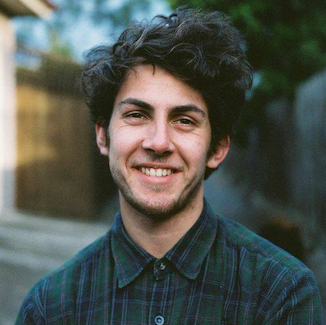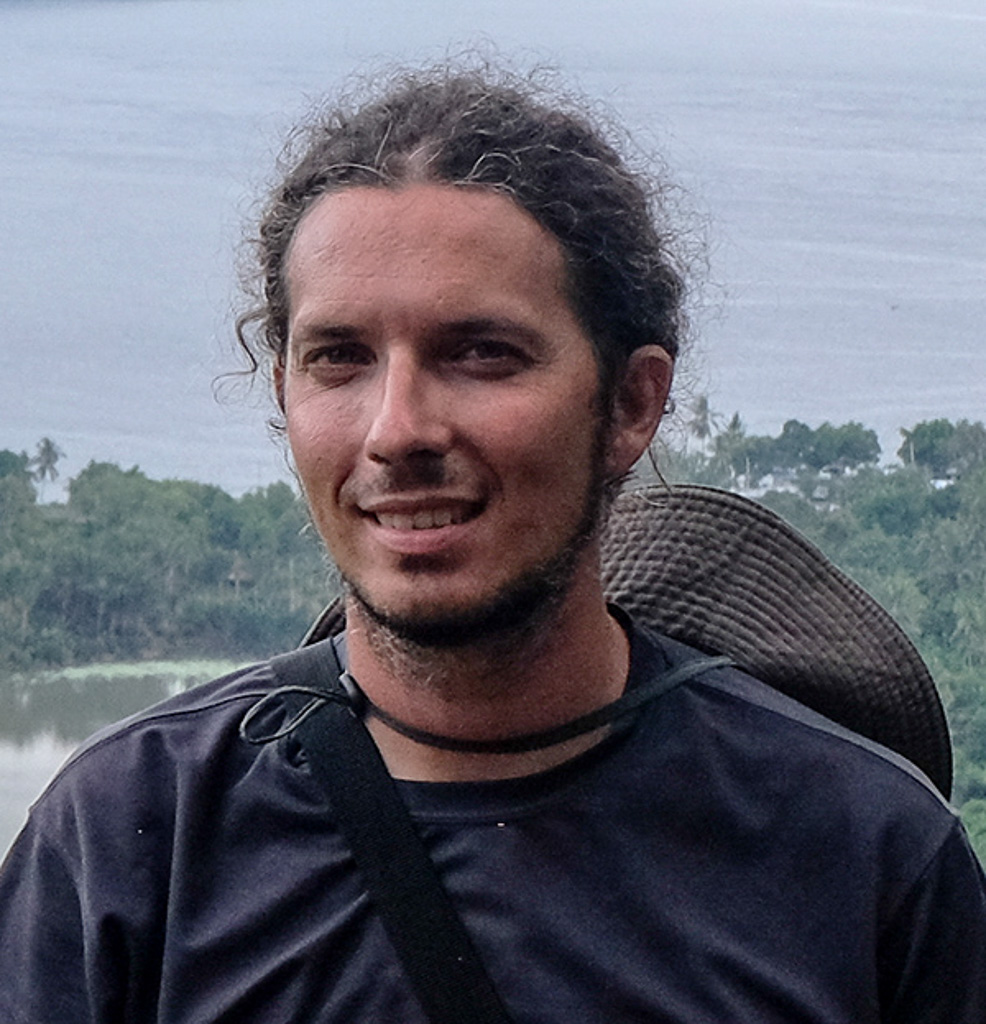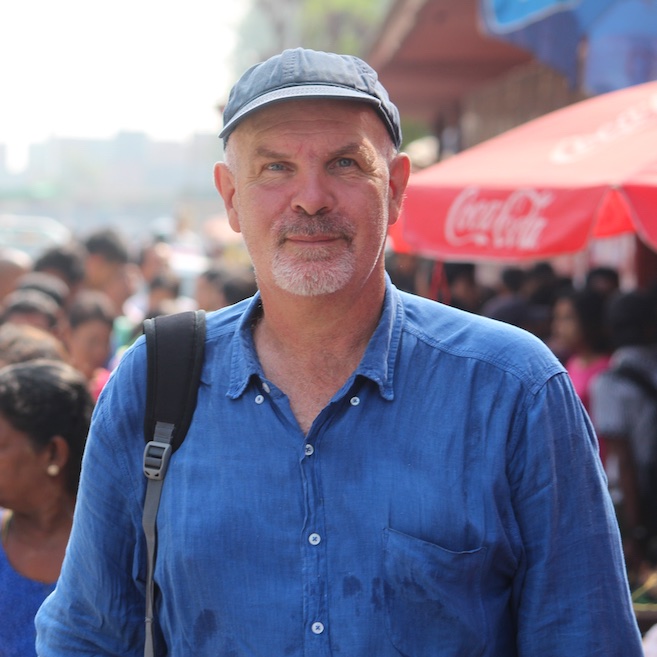
Australia’s nearest neighbor and just one-and-a-half hour’s flying time north of Darwin, Timor-Leste is opening up, slowly, for tourism after a fraught history. Christine Retschlag joins Intrepid Travel’s first tour after a decade’s absence.


Australia’s nearest neighbor and just one-and-a-half hour’s flying time north of Darwin, Timor-Leste is opening up, slowly, for tourism after a fraught history. Christine Retschlag joins Intrepid Travel’s first tour after a decade’s absence.
In the pre-dawn darkness of a brisk September morning, I perch on a pancake-shaped plateau among Timor-Leste’s Maubisse mountains, squinting at the silhouettes of local villagers whose crowns are adorned in a riot of rooster feathers.
Later, as the sun begins to blanket the land, I’ll chant and shuffle in a circle with these strangers who will adopt me as family, to the jingle and clang of their musical instruments. A wiry grandfatherly figure, teeth blood-red from betel nut, laughs and shouts, “Timorese, Timorese”. Nearby, a tiny man also festooned in feathers, blows a big horn to the sounds of “Ho, ho, ho, ho, ho, ho, ho”. It’s a festive feeling indeed.
But first, I must be anointed with a cross by a pinch of soil from the parched ground on which I stand. I am in the home village of Intrepid tour leader Anastacio Madeira, who is being welcomed by his family through this celebration—and by association, this ceremony includes me. I’m now declared part of the family, invited to return ‘home’ here at any stage.
Madeira is leading Intrepid Travel’s inaugural Timor-Leste expedition, 10 years after the company took a hiatus from this Southeast Asian nation. Pronounced ‘Lest-ay’, it means “east” in Portuguese, hence its Anglicized name of East Timor.
How do you begin to understand a country which was settled by the Portuguese in the 16th century, but declared itself independent in 1975—only to be invaded by Indonesia for two decades?
While a UN-sponsored referendum saw Timor-Leste vote for Independence in 1999, a bloody campaign led by pro-Indonesia militia resulted in thousands of recorded deaths and hundreds of thousands of people forced into West Timor as refugees. It was only in 2002 that Timor-Leste became internationally recognized as an independent country. Present-day Timor has its own language, Tetum, an Austronesian language influenced by the Portuguese, and around 45 dialects in a country of 1.3 million people.
One of the best places to start this journey of discovery is at the Timor Resistance Museum, which outlines how almost one quarter of this country’s population was decimated by genocide or displaced as refugees during the first years of Indonesian occupation.
Between 1975 and October 1999, following centuries of Portuguese rule, Indonesia occupied East Timor subjecting its people to torture, sexual slavery, extrajudicial executions, massacres and starvation.
Madeira—whose first name fittingly means “resurrection” in Portuguese—believes the beauty of Timor-Leste is the fact that it is relatively unknown: The nation receives fewer than 10 tourists a day.
“I like the way tourism in Timor isn’t ‘boom’ right now,” he says. “It gives everyone a chance to get everything right. It is a unique destination. We don’t have a lot of tourist attractions. This is the right time, this is the experience you don’t want to miss out on. This is the moment. It is special as it’s still that untouched beauty. For the world traveler, Timor is the perfect place to check out. We want to continue with our authenticity. We are working from zero.”
“Every year, we have a coffee festival and people do tastings and the result is so good. The majority of coffee growing in Maubisse is planted by our ancestors and we as the next generation conserve it and look after it.”
- Chief Wilson Nivio Mendoca
Our bed for the night in the capital is Timor Lodge, former Australian and New Zealand military headquarters. In 1999, in response to UN Security Council concerns over the situation in East Timor, Australia and New Zealand were part of the International Force East Timor (INTERFET) to address the humanitarian and security crisis. Australia, which led the operations, pulled its last troops out in 2013.
These days, in the laidback capital Dili, you can follow the scent of Indonesian clove cigarettes to Timor Plaza for its Saturday night market where sizzling satay sticks hiss from hot plates, 60 different types of bubble tea are on offer, and locals feast on the likes of raba-raba, a vegetable with cassava leaf, banana flowers and papaya.
The next morning, the hypnotic hum of my speed boat glides across the Timor Sea to Atauro Island, home to the most biodiverse coral reefs in the world, considered a global hotspot for whales and dolphins. The water is pristine—and snorkeling this section of the Western Pacific Ocean, part of the Coral Triangle, is one of the biggest draws, its coral garden exploding with bright bubble gum hues amid a rainbow of reef fish including the beautiful blue parrot fish. I come face-to-face with a giant clam whose curious ‘eyeball’, I later learn, is actually a breathing hole.
The island is also home to the social enterprise Boneca de Atauro, a women’s co-operative which supports 42 families through handmade embroidery and textile design products from dolls to handbags, laptop cases, purses and toys. Visitors can buy products ranging from USD$4 to USD$20. So committed are they to their craft and community, the women trek some two hours down from the island’s mountain, and three to four hours back, six days a week, in order to work.
On this island, we become family; our group separated into individual local homestays. With squat toilets and cold mandi bucket showers, it’s a simple set-up. That night, I eat fresh, locally caught fish, sautéed in garlic and tomatoes with a hint of coconut milk with rice and fresh papaya on the side.
I slumber in a rustic room under a lolly pink mosquito net in this homestay organized by Atauro’s Blue Ventures, an organization that works in marine conservation to protect the coral and fish by establishing a local law which forbids fishing in certain areas of this marine park.
And the penalties for breaking the rules are harsh. While Timor-Leste is bound by church and formal law, arguably the greatest deterrent is Tara Bandu; cultural rules which believe ancestral spirits will do the heavy lifting when it comes to punishment. Crimes may not be punished immediately, but the Timorese strongly believe the ramifications will occur at some stage, for you or your family. So ardent is this belief that Blue Ventures simply leaves this type of karma in the lap of the Gods.
My karma means I’m woken by screeching roosters ricocheting around the village, punctuated by the occasional plucky ‘gecko gecko’ chorus from my ceiling. Soon, the joyful sound of children’s chatter joins this choir of chaos.

Back in the capital, we board a beefy troop carrier and head high into Timor-Leste’s Tatamailu mountain range.
At the Sara Guesthouse in Maubisse, local Chief Wilson Nivio Mendoca tells me about the growing culture in Timor-Leste which grows both arabica and robusta beans. “Every year, we have a coffee festival and people do tastings and the result is so good,” he says. “The majority of coffee growing in Maubisse is planted by our ancestors and we as the next generation conserve it and look after it.”
Social enterprises form the backbone of Timor-Leste … employing and empowering largely women through traditional art and craft-making, then sold to visitors.
“The coffee culture is so big here that you can have six or seven coffees a day,” adds Mendoca. “But not in a coffee shop. You do that at someone’s house.”
Fuelled on caffeine and adventure, we head even higher to Hatu Bulico, the highest village in the country, through sometimes rocky terrain and around somewhat precarious corners.
Those seeking even higher thrills are invited to rise at 2.30am to summit Timor-Leste’s highest mountain, Mt Ramelau, which offers spectacular sunset views from its 2,986-meter perch above sea level. Fearful of heights, I skip this activity which I leave in the capable hands of my friend and experienced hiker Steve Madgwick.
“From below, it looks like it’s going to be more of a climb than a hike to reach the Virgin Mary statue on the massif atop Tatamailaa, as the locals call it,” Madgwick says.
“The local guide set a nice ambling pace and factored in plenty of rest stops in the steeper sections of the trail whose gradient never gets too challenging,” he tells me. “There are a few slightly tricky rocky sections with loose scree but the wide path is mostly firm under foot, worn smooth by the feet of Catholics pilgrimaging to the statue. They say you can see all of Timor-Leste on a clear day up here.”
Further along on this journey, and back in the community of Aileu, Marciana da Silva de Jesus tells us about Projeto Montanha, which was opened for residents living in the mountains who have difficulty accessing school or study opportunities. Run by former student Marciana da Silva de Jesus, it works with the community to promote health, culture, environmental sustainability, emotional and spiritual development.
Employing between 40 and 50 permanent staff and assisting between 200 and 300 students since it opened, it generates income predominantly through selling local arts, crafts and woodwork. There’s also a restaurant here—all the facilities use as many local materials and produce as possible in a bid to teach local villagers to become more sustainable.
Social enterprises form the backbone of Timor-Leste and this trip slowly winds its way back to Dili and to the Alola Foundation which was founded by Timor-Leste’s previous First Lady, Kirsty Sword Gusmão. It operates on a similar basis to other social enterprises around the country, employing and empowering largely women through traditional art and craft-making, then sold to visitors.
Other examples include Dili’s Ahi Matan Restaurant, formed by a group of young Timorese who collaborated to promote Indigenous cuisine with dishes such as Lekirauk Ikun, a cordial from a plant related to rhubarb only found in the mountains; Etu Hakmerik, a vegetable and rice dish of cassava from the villages; and Batar Tuku Belar, a traditional ‘popcorn stew’ from Atauro Island.
A quote on the wall by American novelist Jonathan Safran Foer sums up the importance of food here: “Food is not rational. Food is culture, habit, craving and identity.”
Like the food it serves, Timor-Leste is embracing its culture and cravings while forging new habits and identity. As a traveler, you can see and feel both survival and success in its nation story as it moves, hopefully, to a new era of renewal and regeneration.
**
The writer traveled as a guest on Intrepid Travel’s Timor-Leste Expedition which was developed in partnership with Market Development Facility (MDF). This nine-day journey has four departures in 2024 between May and September.
***
Adventure.com strives to be a low-emissions publication, annational
d we are working to reduce our carbon emissions where possible. Emissions generated by the movements of our staff and contributors are carbon offset through our parent company, Intrepid. You can visit our sustainability page and read our Contributor Impact Guidelines for more information. While we take our commitment to people and planet seriously, we acknowledge that we still have plenty of work to do, and we welcome all feedback and suggestions from our readers. You can contact us anytime at hello@adventure.com. Please allow up to one week for a response.

Christine Retschlag is a multiple award-winning Australian travel journalist with 34 years of experience, who is working and living in Australia, Hong Kong, London and Singapore. At home, you’ll find her on the back deck of her Queenslander cottage with possums, kookaburras and the resident carpet python who makes the occasional cameo appearance.








Can't find what you're looking for? Try using these tags: